ALASKA: Confronting hard truths in the Arctic Circle
This land breaks the rules and leaves me questioning everything
Is two plus two even four anymore? I’ve lived long enough to be solidly on the downhill slope of a century, and my mortal body is picking up speed. All this time, I’ve believed certain things are inherently true, without question. But now I’m not so sure.
1. Days are measured in 24-hour periods, including sunrise in the east and sunset in the west.
❌ Not everywhere
People who live close to the equator experience 12 hours of daylight and 12 hours of darkness, year-round. It’s normal to them, perfectly balanced, and completely predictable. Most everywhere else, we talk about the shortest and longest days of the year. We still believe in the sanctity of the 24-hour day, though—or do we?
If you go way up north, where my husband Andy and I are this week, the length of any one day varies wildly. As I write, in late June, I’m in Prudhoe Bay (aka Deadhorse), Alaska, the northernmost point accessible by car in North America. As a busy oil drilling facility, this is not necessarily a scenic place, but it is far—300 miles (482 km) above the Arctic Circle line, at 70° north latitude, on the shores of the Arctic Ocean.1
The last time Prudhoe Bay witnessed a sunrise was May 15th, and the glorious glowing orb doesn’t have any plans to dip below the horizon again until July 28th. This means a total of nearly 1,800 hours will go by between one sunrise and the following sunset here. Can Prudhoe Bay measure days by sunrise and sunset?
The sun wanders in a weird, loopy circle here at this time of year, arcing across the sky from east to west, then meandering back to the start again—but never disappearing. On the Summer Solstice itself, I set an alarm to awaken me every hour, on the hour, so I could observe this bizarre phenomenon. We keep our window shades drawn at night, so each time I stepped outside, from 11 PM to 6 AM, I was blinded momentarily by the sunlight. Combined with my ever-increasing grogginess, watching the sun gradually cross back from west to east in the middle of the “night” was enough to make me wonder about the mushrooms I’d cut up for our salad.
Andy and I will only be this far north for the summer months. But on November 24 of this year, the sun here at Prudhoe Bay will sink below the horizon and not reemerge until January 18. That means there will be no sunrises at this location from before Thanksgiving until well into the new year. The sky will do that eerie blue twilight thing at midday, but not enough to ever call it daylight.
But winter this far north is not a quiet time for soup and a crackling fire. On the contrary, it is actually the busiest time for industry and transportation, as lakes and rivers are frozen into stable, barrier-free ice roads. The workers at Prudhoe Bay clock 14-hour shifts regularly. Make hay while the sun shines, right? Or is it while the sun doesn’t shine?
What is time, anyway, and how should it be measured? My brain hurts.
But that’s not all.
2. With the exception of intentionally stunted bonsais, trees are tall—at least as tall as a person.
❌ Not necessarily
Most children learn early to draw trees with long brown trunks and a poof of greenery on top. Their attempts are rudimentary at best, but we all recognize them, because most of us think that’s basically what trees look like.
This land on Alaska’s North Slope (the vast tundra between the northernmost mountain range and the Arctic Ocean) looks to the untrained eye to be barren. But it actually contains whole forests of birch trees that don’t come up to my knee, and dwarf willows that barely clear the toe of my hiking boot. And yes, these woody miniatures are verifiable trees. Cut them open and count the tiny rings for yourself.
Only the shallow top layer of the earth thaws in the summer here, with rock-hard permafrost underneath, so there’s no room for large tree roots to take hold. Instead, the trees here spread low, hugging the warmth of the summer soil and ducking under the omnipresent wind, extending their roots out horizontally so they can hold hands under the surface. Because they are content to stay small and unassuming, and are willing to support each other underground, these tiny trees can survive the coldest winters on the planet.
3. Aside from soft sand and slushy snow, solid ground is solid ground.
❌ Wrong again
From a distance, as well as up-close, the Alaskan tundra often appears as lovely green meadows, dotted with wildflowers and small ponds. Where Andy and I were camped for Solstice, we gazed out at the lovely rolling hillsides and couldn’t wait to go hiking. After time in the woodsy and often steep lower latitudes, it would be a treat to hike over such level ground—and in relative safety, too.
All of Alaska is bear country, from black bears to grizzlies, to the enormous coastal brown bears and even the fearsome polar bears in the extreme north. Hiking here means taking care to not accidentally surprise a bear (or moose)—particularly at this time of year when they are so protective of their young. We wear bells and carry whistles and bear spray, and we talk and sing, especially when coming around a blind corner or over a rise. But out on the open tundra, visibility is excellent. Bears can see us from a distance, and we can see them—so helpful in preventing those impromptu meetups none of us desire.
Andy and I laced up our hiking boots and pulled on long-sleeve shirts and netted head coverings to protect us from the squadrons of mosquitoes—Alaska’s apex predators—then we set out for a lovely hike.
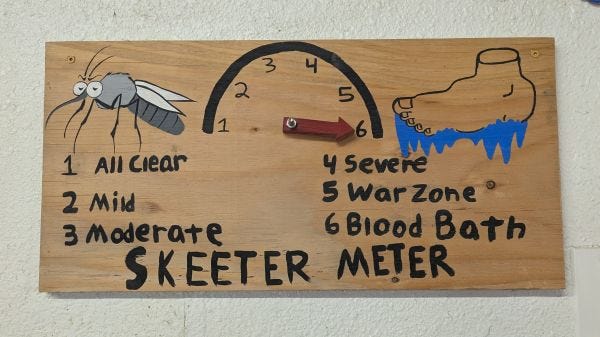
Mirrored ponds, a rainbow of tiny flowers, and the cheerful music of a nearby stream? Yes, please!
Squish.
Squish, squish!
To our surprise, every step was springy and spongy and slow, like walking on an enormous trampoline. We both began to laugh. We felt as if we were definitely at risk of twisting an ankle, but the moss was so soft and pretty, we agreed it would be the most pleasant setting ever for an injury.
Sphagnum moss. It’s amazing stuff, absorbing and holding up to 16 times its own weight in water, then shading its liquid hoard under its dense mats of groundcover. This moss is essential up here, as summers are desert dry. With the underlying permafrost refusing to absorb the snow melt, the standing water remains on the surface (oh, hey there, skeeters!). Without the sphagnum moss and other spongy cushion plants, the water would immediately evaporate in the round-the-clock sunshine.
The mossy tundra is a joy to walk on for short distances, but our hike didn’t last nearly as long as anticipated. We would need firmer ground beneath our feet.
But—contrary to everything I’ve ever believed to be true—even the pavement way up here is not firm ground. Parts of the Dalton Highway, Alaska’s treacherous route to the Prudhoe Bay oil fields, are indeed paved now, but after several hard days of driving north, we learned to almost prefer the long, dusty stretches of hard-packed dirt and gravel.
The pavement here is too soft, too malleable, too prone to frost heaves—those unexpected dips and rises caused by the repeated freezing and thawing of the moisture in the underlying layers. The surface of the road varies wildly, with little warning other than small skid marks made by airborne cars returning unceremoniously to earth. In an instant, the road changes from level and smooth to a raucous concrete moguls course—great for expert-level skiing (if your knees can take it), but not so great for driving.
4. Digging down to solid ground is the best way to lay a sure foundation on which to build.
❌ Not here
Sing it with me, Sunday School kids, the wise man built his house upon the rock. Because that’s best, isn’t it?
As explained above, the ground here is too unstable because of the repeated thawing and freezing of the active layer on top of the permafrost—and anyway, the permafrost is not something you would want to dig through, even if you could, as disturbing it makes the ground around it completely unstable.
Way up here above the Arctic Circle, the best roadbeds are raised above the surface like an elevated two-lane racetrack.
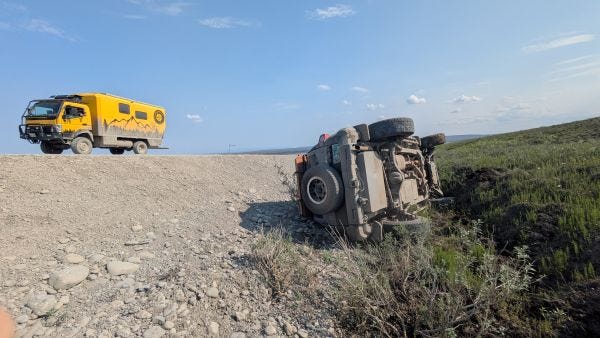
The most secure buildings are built on risers or stilts—or better yet, on trailers so they can be moved seasonally.
This disturbs my foundational beliefs, the bedrock of my understanding. (See what I did there, wink, wink?)
5. The summer air temperature down at sea level is warmer than up in the snowy mountains above it.
❌ One would think
Up here, it’s common for a sunny day on a snow-covered glacier to be warmer than the same region at sea level. The sun reflects off all the blinding snow and increases the air temperature. When we were preparing to travel up onto a glacier to go dog sledding, we were warned it would be five degrees warmer up there. Accurate. The mushers were putting sunblock on the dogs’ bellies.
6. It doesn’t get very hot in Alaska.
❌ Incorrect
Because of the direct angle of the sun on the northern latitudes at this time of year, 80℉ degrees (27℃) is crazy hot. We were in Fairbanks during one such heat wave—the first time an official heat advisory had ever been issued anywhere in the state. Standing outside in the open for even a few minutes, I felt like the sun was a weapon targeted directly at me. As a person who likes being on the warm side and recently spent several months in Mexico, as well as several months in Southeast Asia, and even a few weeks in Zambia, I was shocked to tap out at only 80 degrees, but I had to seek shade. I couldn’t handle it.
Score: 0/6
I have to admit, my visit to these extreme northern latitudes has left me a little shaken. I thought I knew things—basic things—like how to measure a day, what a tree is, how to recognize and utilize solid ground, and where to escape the summer heat. And based solely on my mid-latitudes prior experience, I was right.
But I was wrong, too. I was wrong to think that my experience was the only valid perspective. Just as firmly as I believed certain things to be true, I found they are topsy-turvy, upside-down, absolutely untrue for people whose entire life experience is here in the far north.
Last week I wrote about the value of gaining a new perspective, as demonstrated by our flight to the top of the highest mountain in North America. You can read about it by clicking the link here if you missed it:
But this week’s time in the Arctic has shown me just how important a change in perspective can be when it comes to understanding each other. I can have every bit of evidence from my world that backs up my opinion—only to find that other people have equally valid evidence from their own experience to support an opinion diametrically opposed to mine. So, which one of us is wrong? How important is it to be right? In this era of divisiveness, perhaps it wouldn’t be such a bad thing to inquire, to learn, to experience life from another angle and check out the view.
I don’t know much—significantly less than I used to, in fact. But it’s got me thinking.
Until next week,
Sherry
P.S. By the time you read this, we will be headed back south again. After exploring Alaska for a bit longer, Andy and I will set a meandering course for Argentina—driving Walter, our big yellow adventure truck, from the top of North America to the bottom of South America. Yeehah!
And yes, I did strip off my socks and shoes to dip my toes in the Arctic Ocean this morning. The air temperature was 40℉ (4℃) and the water was a chilly 38℉ (3℃). I had intended to only go ankle-deep, but I slipped off the ice shelf I didn’t know I was on and ended up in past my knees. Surprise! I think Andy got it on video, so perhaps it will be on our YouTube channel eventually.




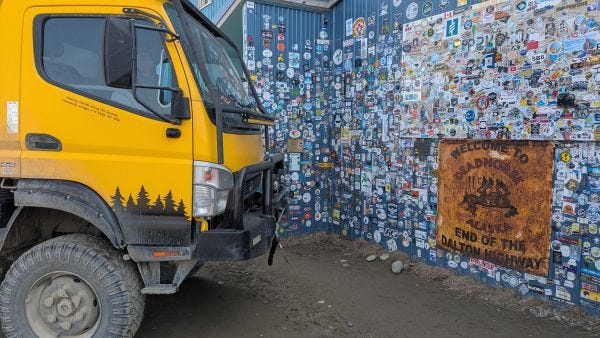
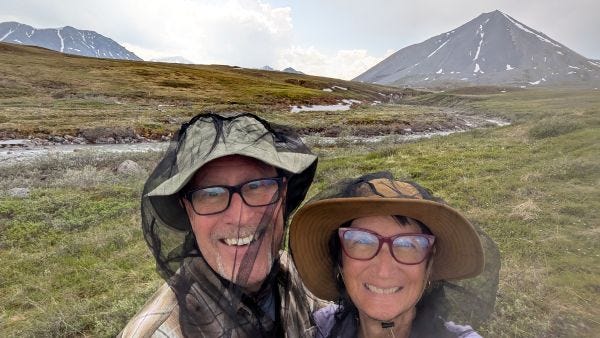
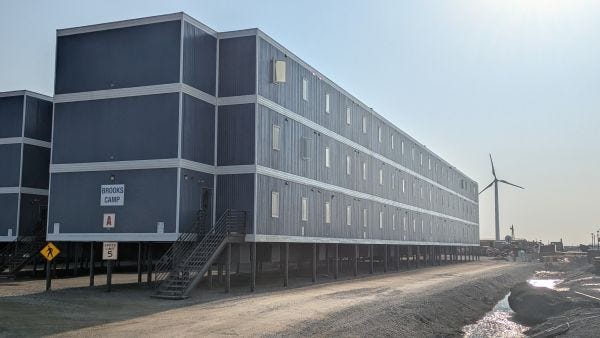
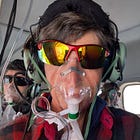
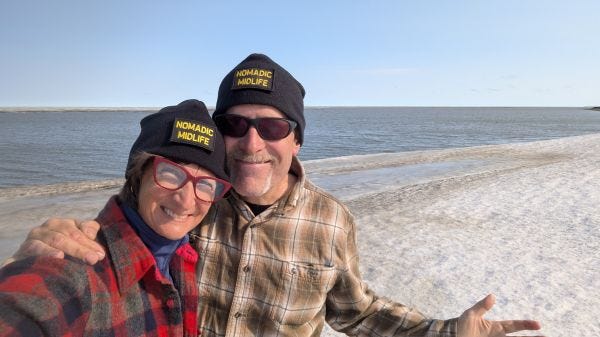
Arctic Ocean - yay! Great article!
A friend in church stood up to share that he was giving up being right for Lent. Truly an example to be followed!